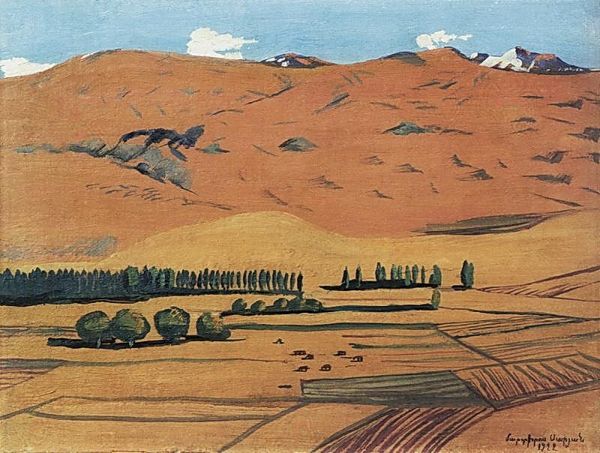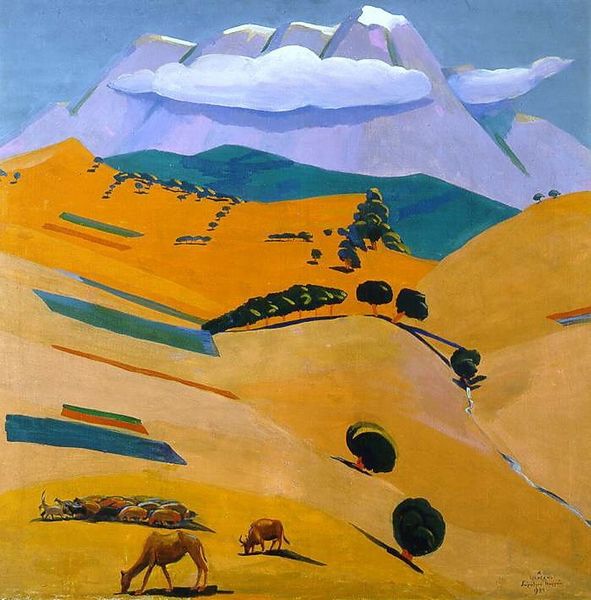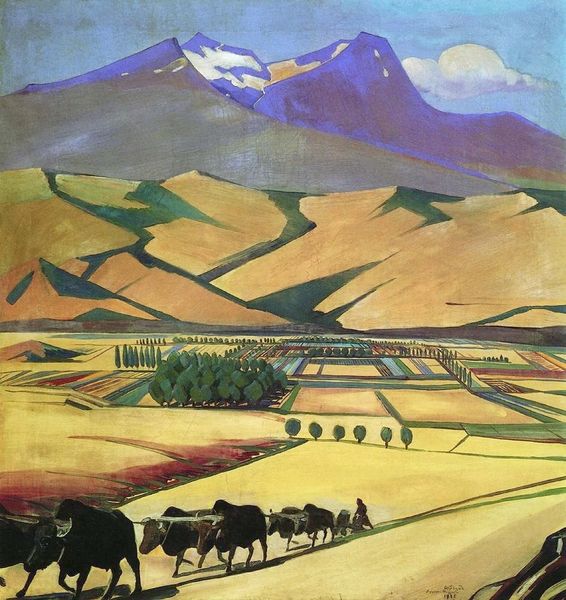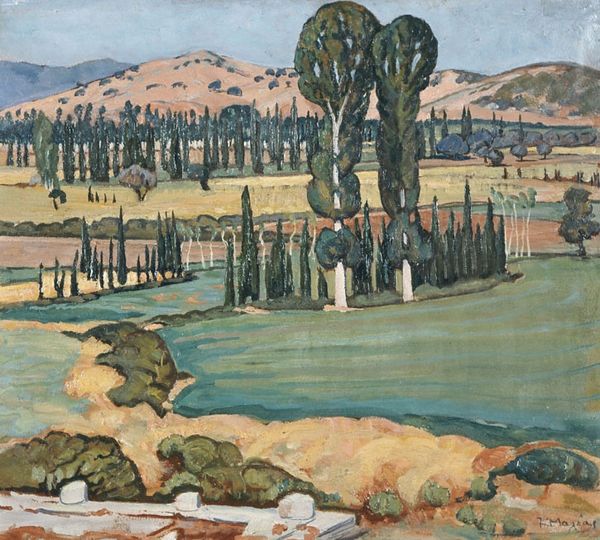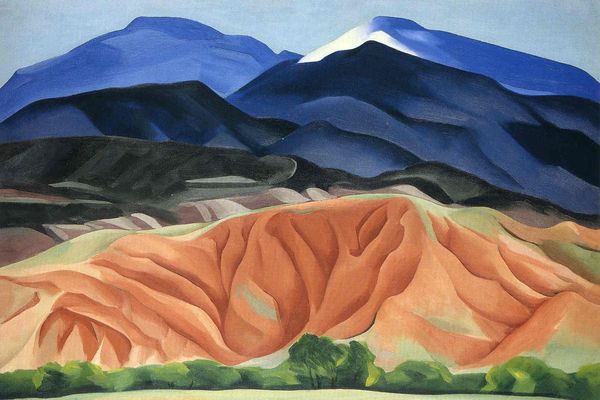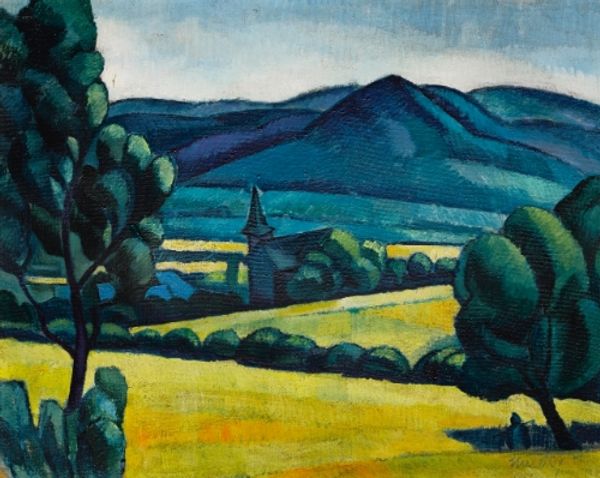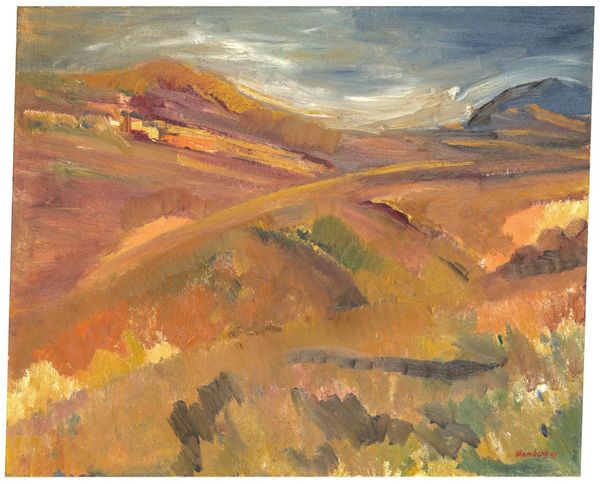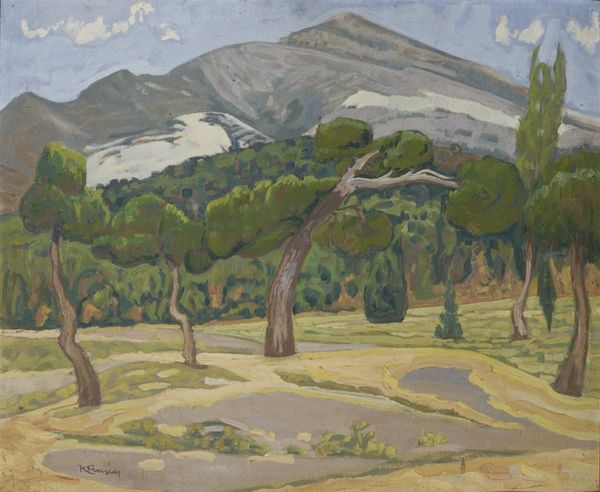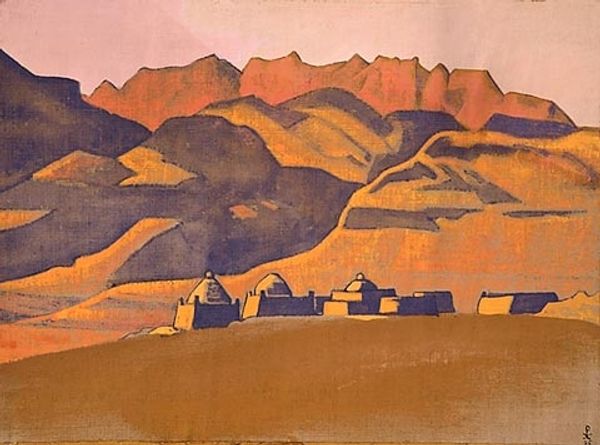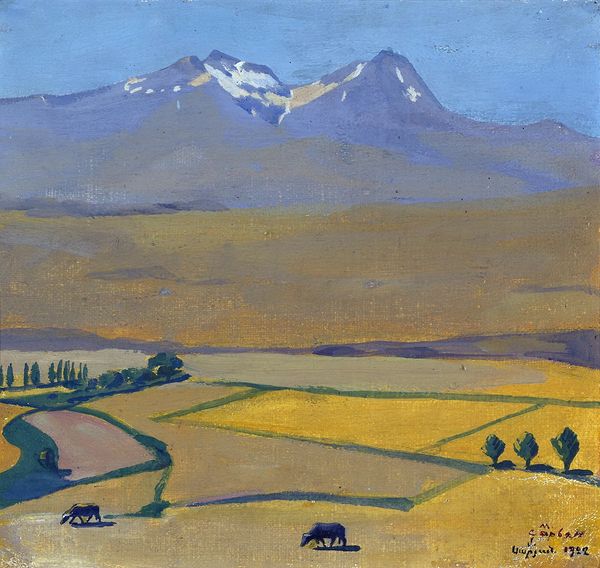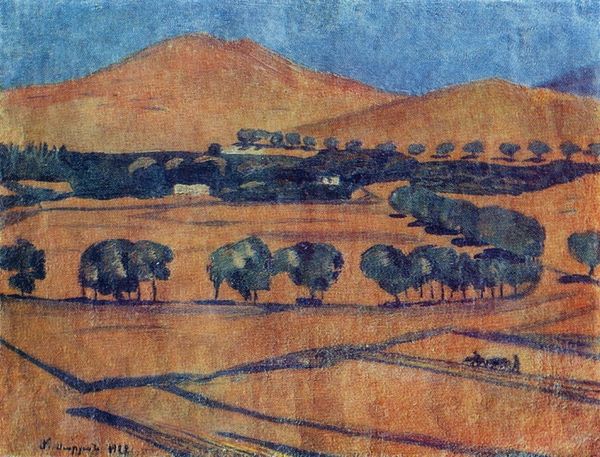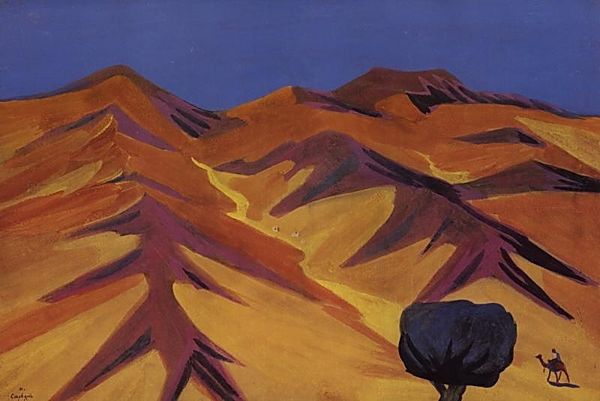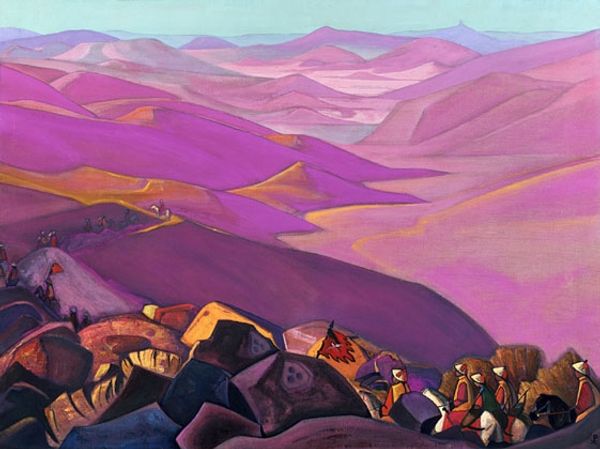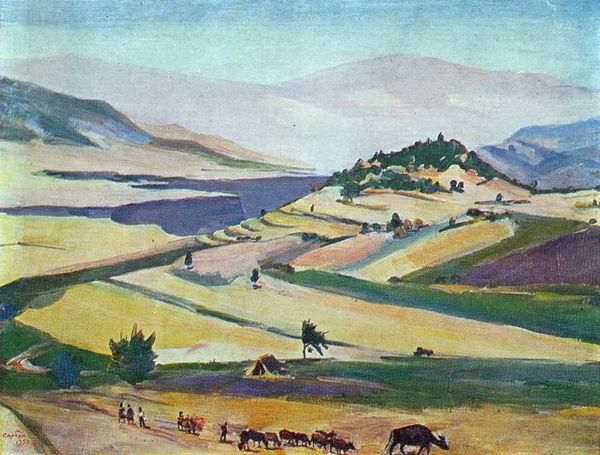
Dimensions: 70 x 70 cm
Copyright: Martiros Sarian,Fair Use
Curator: Martiros Sarian's "Geghama Mountains," painted in 1926. He used oil paint to conjure up this evocative scene. What are your initial thoughts? Editor: The color overwhelms me—a near monochromatic expanse of ochre. It creates a strange, almost dreamlike, atmosphere, intensified by the simplified forms of the landscape elements. Curator: Absolutely. Sarian's work, while aesthetically beautiful, sits within a period of immense social change in Armenia under Soviet rule. It depicts a seemingly timeless landscape. The role of the Armenian artist within this rapidly evolving context had been redefined as educators and propagandists. Editor: I notice the handling of the paint itself—relatively flat, with minimal layering. What impact do you think that had on the art production in his social context, compared with other avant-garde movements of the time? Curator: I agree. The flatness allows Sarian to focus on pure color relationships. The limited range and deliberate placement give us a landscape that is more symbolic than naturalistic. He's not attempting photographic realism. Also, consider the physical act of painting outdoors and its impact during a post-revolutionary period. Was painting "from life" politically safe or artistically risky? Editor: Interesting point. While it appears straightforward, the landscape itself acts as a vessel of political message or commentary about Armenian identity or memory? The lack of detail becomes almost political in itself! Curator: Precisely. Sarian was working with very specific social requirements about how landscapes should be produced, yet he's clearly bending those constraints. Editor: The material reality is this, though. Oil paint offers stability and relative speed in its application compared to some other materials like fresco or mosaic, used previously in sacred or community building settings in Armenia, it can be framed easily to be collected for display. The oil medium, through which national art takes to new spaces of power through mobility. Curator: It is really a fascinating case study of how personal expression navigates through times of institutional and socio-economic changes. Editor: Definitely. Looking at the scene in oil and analyzing the cultural factors, this piece reveals how an image mediates cultural production and expression through labor in difficult circumstances.
Comments
No comments
Be the first to comment and join the conversation on the ultimate creative platform.
